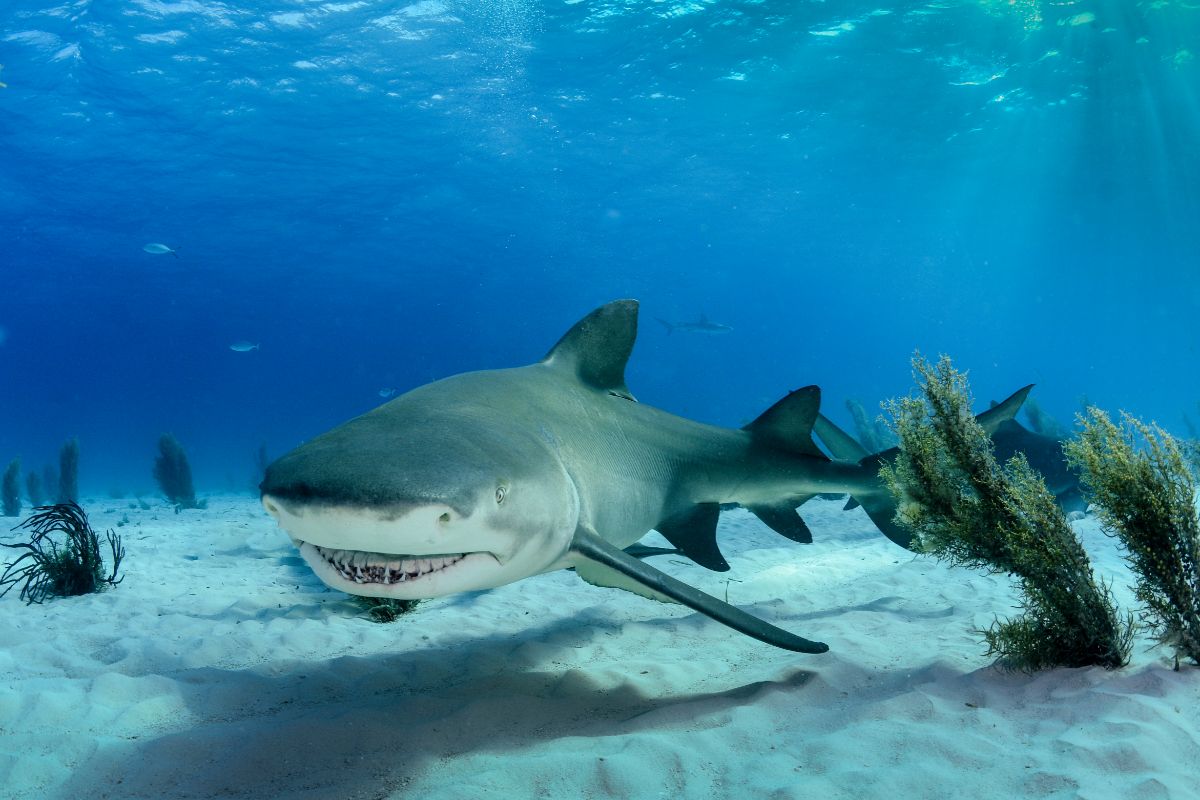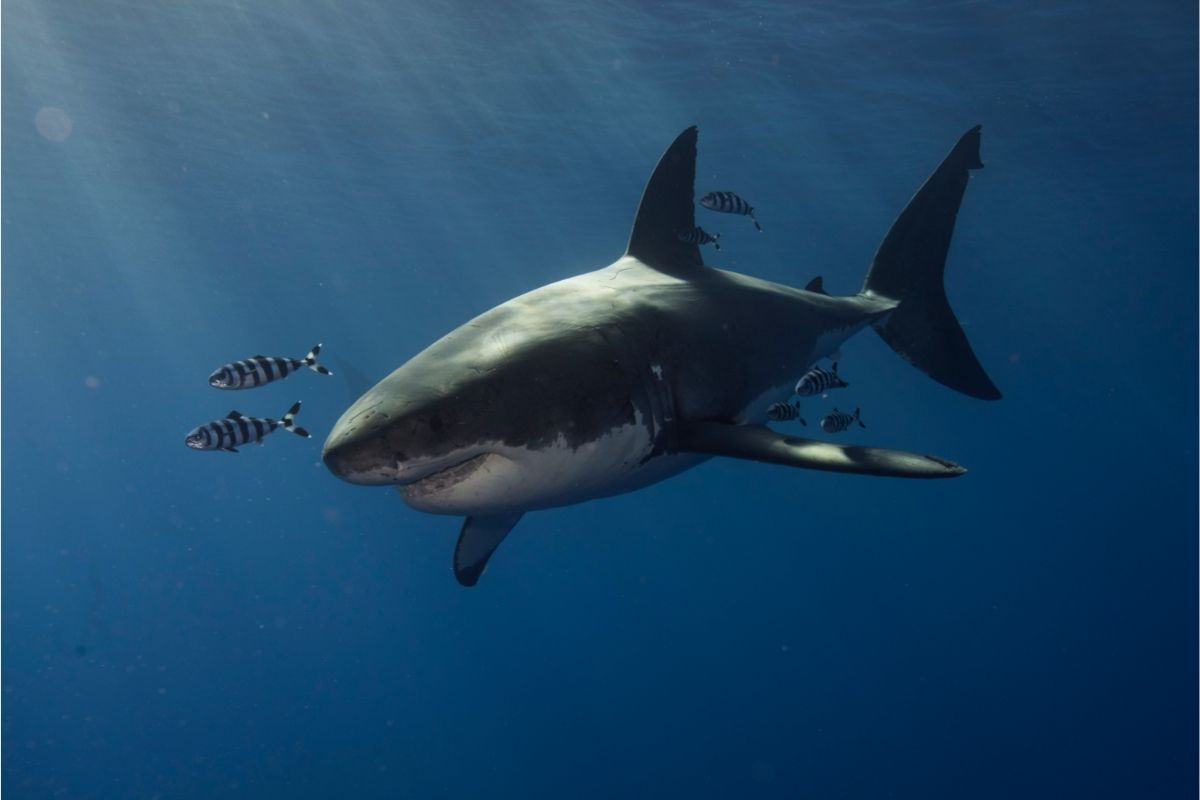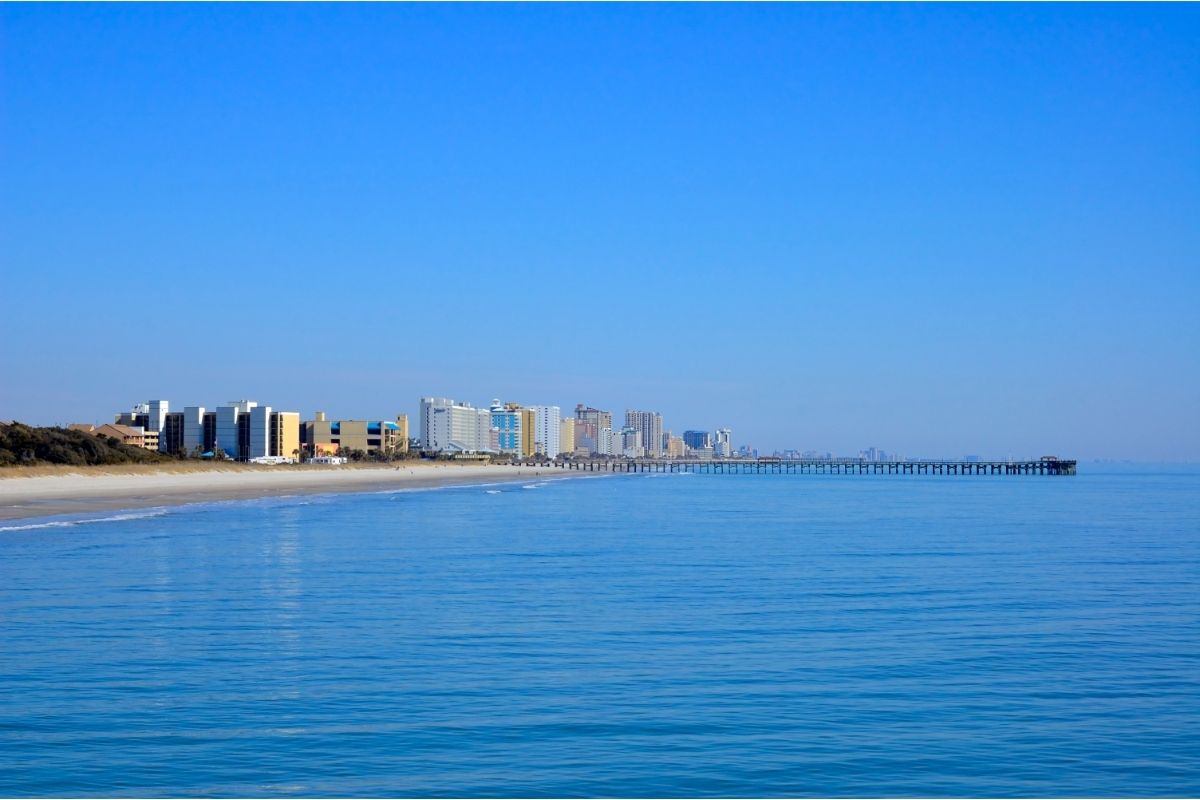Have you ever wondered why you’ve never seen a great white shark in captivity? Or that great white’s in captivity are so few and far between?
It’s not that it’s never been done, of course it has, great white sharks have been kept in large aquariums in the past. But the issue is that they don’t live very long once they’ve been placed in captivity.

So, the next question you may have is why do great white sharks die so quickly in captivity?
Well there are a few reasons as to why, but one of the main reasons why great white sharks die so quickly in captivity is due to a buildup of toxic levels of lactic acid.
It’s insinuated that these sharks cannot dissolve high levels of lactic acid unless they process huge amounts of oxygen, which obviously cannot be done in the small space of an aquarium.
There’s actually only one place in the world that’s been able to keep a great white shark in captivity for more than 16 days, and that’s Monterey Bay Aquarium.
This happened in 2009 and it was the fifth great shark that they had put into captivity.
We’ll be explaining a bit more about this throughout the article, but also some more reasons as to why great white sharks don’t last very long in captivity.
Reasons Why Great White Sharks Can’t Live In Captivity
Like we mentioned earlier, it’s not like aquariums haven’t tried to get these sharks to live in captivity, between the 70s and 90s many aquariums tried to pull a number of their resources together to try to capture great white sharks to bring to their aquarium, but they faced so many difficulties in doing so.
The great whites would refuse to eat, some were injured during transportation and like we’ve said, many would die just after arrival with the rest following not long after.
Many aquariums stopped trying as it just wasn’t worth the expenses, as there was zero payoff. But there are many other reasons why great white sharks can’t live in captivity, we’ll list some of them here.
They’re Difficult To Transport
If you think of the characteristics of a great white shark, the first one that usually stands out is how big they are.
Female great whites can reach up to 20 feet in length and can weigh up to 362 stone, now it’s hard enough to get them into a large transport tank, but even if you do, the struggles don’t end there.
Great whites need water to constantly pass through their gills to efficiently obtain oxygen, this process is called ram-ventilation and this is why great whites can’t be captured in nets.
To capture them, you need specially designed open water panel tanks which allow the sharks to breathe and minimize any injuries occurring, and of course these open water panel tanks cost a pretty penny.
These tanks are very difficult to transport over large bodies of water and the fuel and mileage are an issue as well.
They Need A Lot Of Space
Great whites need a lot of space through every step of the process, from the transportation tank to their new enclosure in the aquarium.
Their new home needs to mimic the open ocean, which as you can probably guess is incredibly difficult in a confined space as sharks are used to roaming up to 50 miles through the ocean every day.
You may see different types of sharks at aquariums, like sand tiger sharks, nurse sharks and zebra sharks in much smaller tanks which don’t pose too many difficulties.
This is because these types of sharks wade the ocean’s surface. But great whites often explore deeper terrain, which is why an enormous tank is needed for them, they’ll tend to injure themselves in a smaller tank.
They Refuse To Eat
Great whites are used to being hunters in the wild, which poses an issue for aquarium workers as in many cases the sharks will refuse to eat the food that’s being given to them.
These sharks also tend to enjoy eating sea otters and other sea mammals, which is another issue for aquarists as many species of otters are highly endangered and are protected species, so cannot be obtained legally.
Great whites also prefer their prey to be alive when they eat, which most people attending aquariums don’t want to see.
They also enjoy the hunt and can become depressed when they are not able to, which poses a lot of problems in itself.
It’s Inhumane
Another reason why great white sharks can’t live in captivity is because it’s inhumane.
We know that this has never stopped humans before, but this added with the fact that it’s extremely expensive to capture, transport and maintain the sharks with little to no payoff happening as most, if not all die shortly after being transferred into captivity puts most aquariums off keeping great whites in captivity.
They’re Difficult To Capture
Like we mentioned earlier about the lengths and weight great whites can reach, they’re incredibly difficult to actually capture.
Their size is obviously a part of their appeal, and why so many people want to see them up close, but this poses many issues for aquariums who are trying to bring them into captivity.
They require special tanks for their torpedo-like bodies and these tanks are especially expensive to design and only certain aquariums will be able to afford these, small, local aquariums have no chance.

They Get Injured Easily
Sharks are nomadic animals, which means they like to wander, so this means putting them in a small and confined space won’t bode well for them.
A lot of them will aggressively hit the walls of the aquarium tanks they’re in, to break the glass walls, which can often result in them becoming injured and sadly some of them may hurt themselves so much that they die from their injuries.
Many researchers agree that captivity has negative effects on any animals, but some experts believe that the glass walls affect their electroreception system and this is why the sharks will react in this way and injure themselves.
But some put it down to the depression that they’re feeling, which is most likely true.
Whatever the reason, it’s not natural to put any animal in captivity, especially ones that are so used to being able to roam freely across large expanses.
What Happened To The Shark At Monterey Bay Aquarium?
Now if you remember earlier, we mentioned that Monterey Bay Aquarium was the only place where a great white shark lived in captivity for more than 16 days.
The first out of the five great whites at this aquarium lived for 198 days, but the rest died shortly after being placed into captivity.
The sixth great white shark at Monterey Bay was also a success, as it lived for 6 months in captivity until it was released back into the wild.
You may be wondering why this shark was so successful, whilst others weren’t.
Well the reason it was so successful was because it was a small great white, it was only about 4 feet in length whilst female adult great whites can reach lengths of 20 feet.
What’s The Longest A Great White Shark Has Lived In Captivity?
We already know that it was at Monterey Bay Aquarium, but just how long was it?
It was 168 days in 2004, it was actually caught accidentally by halibut fisherman.
The sixth great white that we talked about earlier that Monterey Bay Aquarium also kept in captivity was captive for 6 months until it was released in 2011.
Which is an impressive feat seeing as most captive great white sharks will die only days after being captured.
Does The Monterey Bay Aquarium Still Have A Great White Shark In Captivity?
No, the last great white shark that the aquarium had in captivity was the young great white shark that was kept in captivity for six months in 2011. Sadly the great white did die after being released back into the wild.
Final Thoughts
The next time you’re at an aquarium, you now know why there isn’t a great white shark exhibit.
Many of the sharks just can’t be sustained as they need a huge aquarium to be able to mimic the open ocean that they’re used to, which just can’t be designed at most aquariums.
Great whites also need to hunt themselves, and will tend to not eat if given food by aquarists, they also need their prey to be alive which is an ethical issue.
- Is It Possible For A Shark To Swim Backwards? - August 2, 2022
- Are Leopard Sharks Dangerous? - August 2, 2022
- What Are The Differences Between Shark And Dolphin Fins? - August 1, 2022








